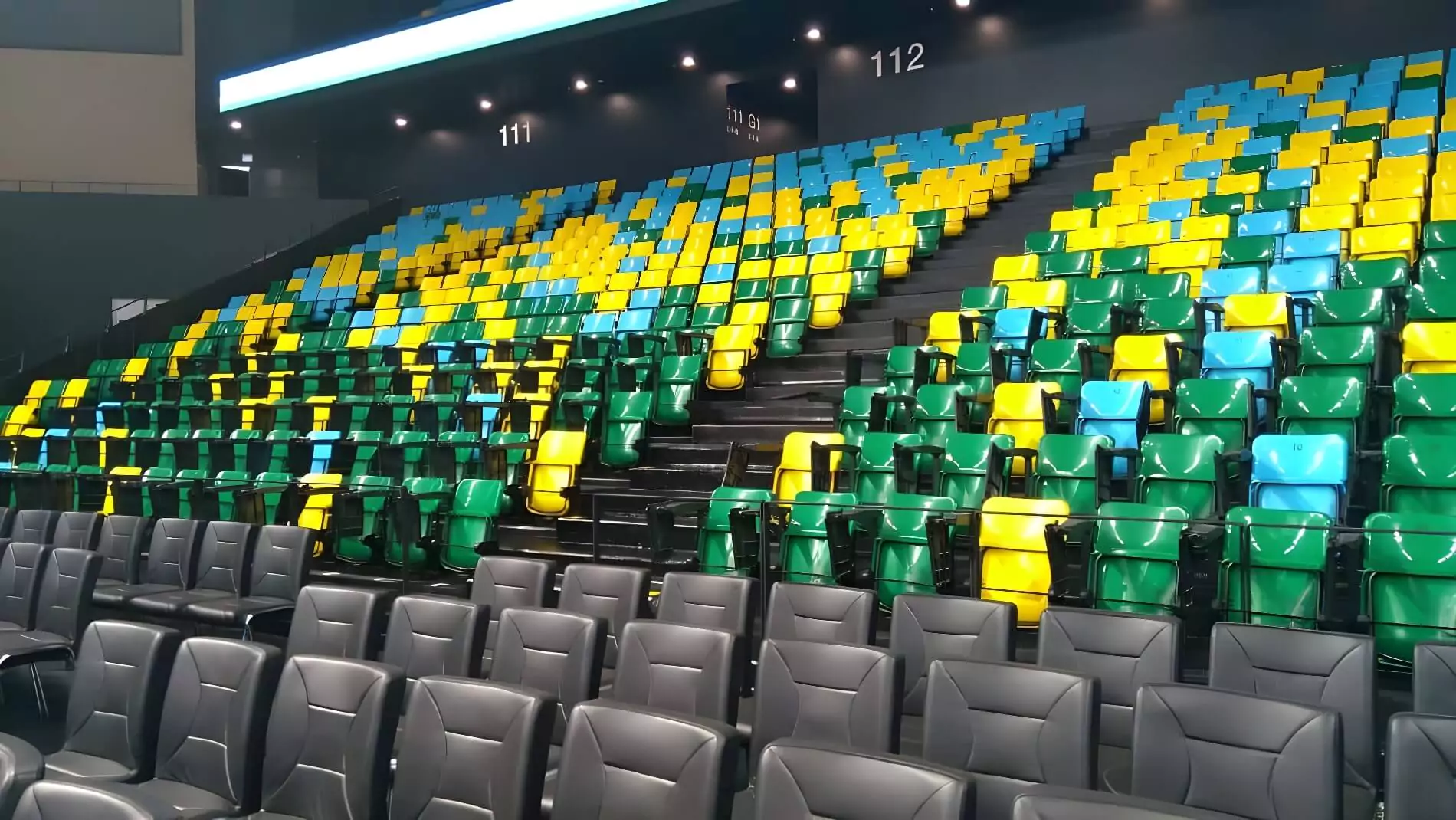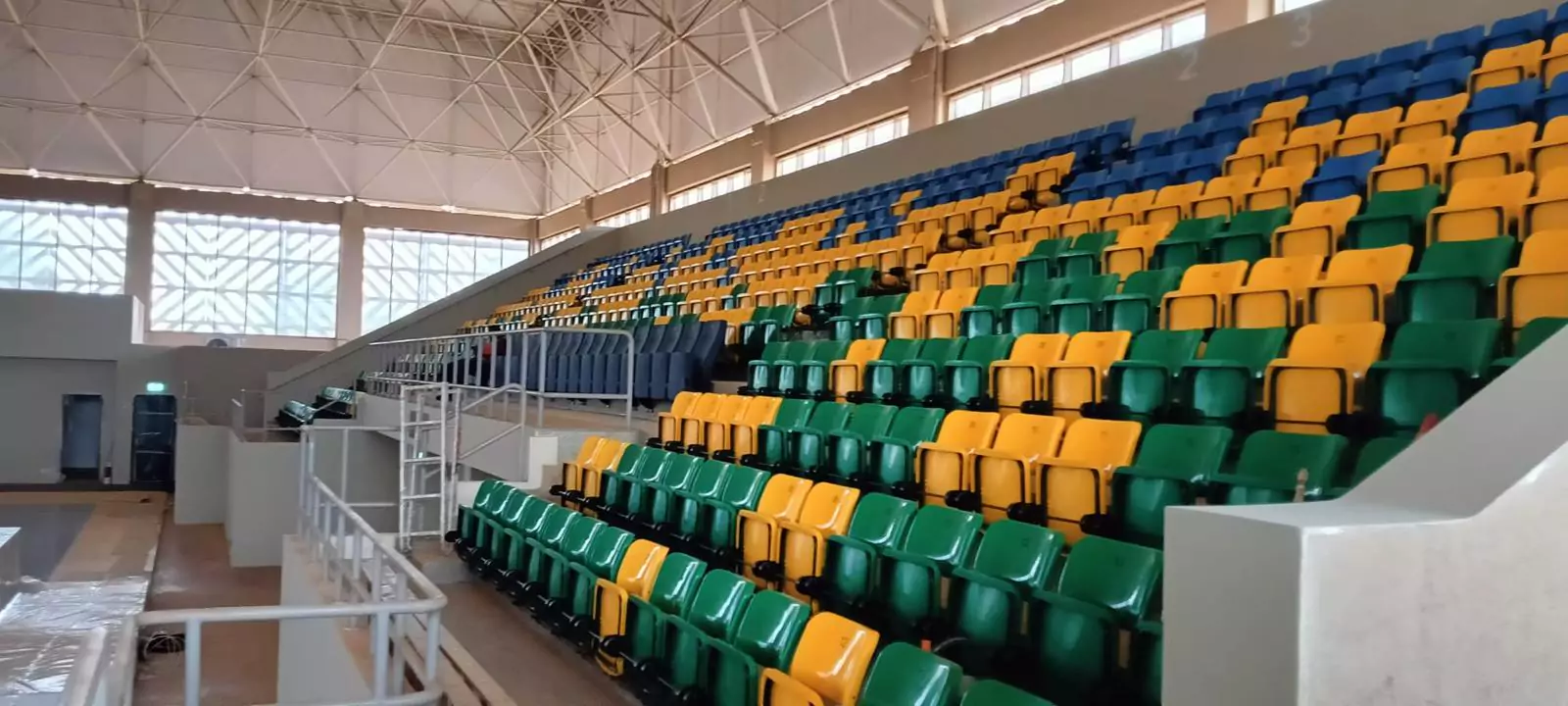Stadium Chairs Europe
Stadium Chairs in Europe: Innovation, Sustainability, and Multi-Sport Adaptability
Across Europe, stadiums are undergoing significant modernization projects to meet the evolving expectations of fans, clubs, and international federations. At the heart of these transformations lies one essential element: the stadium chair. No longer a simple plastic seat, today’s stadium chairs represent a balance of innovation, durability, and sustainability, designed to enhance both fan experience and stadium operations.

Why Stadium Chairs Are Vital for European Venues
European sports culture is diverse—football, rugby, athletics, tennis, and concerts all share the same arenas. This diversity creates unique demands on stadium chairs:
Ergonomic comfort for fans attending long events.
Weather resistance for open-air stadiums in varied climates.
Safety compliance with UEFA, FIFA, and EN standards.
Custom design options to match club identity and sponsor branding.
High-quality seating not only improves the fan experience but also adds commercial and aesthetic value to venues.
Key Trends in Stadium Chair Design Across Europe
1. Sustainability as a Priority
With the EU Green Deal shaping future construction standards, seating manufacturers are focusing on:
Recyclable plastics and metals.
Low-carbon production methods.
Refurbishable components for extended product lifespan.
2. Modular and Flexible Systems
Modern stadiums need adaptability. Modular seating systems allow:
Fast reconfiguration for football, rugby, concerts, and cultural events.
Efficient installation and maintenance.
Scalability for both large and small venues.
3. Premium and VIP Options
European fans are demanding more premium experiences. Stadiums are expanding VIP zones with:
Wider, cushioned chairs.
Leather upholstery and premium finishes.
Hospitality integration for an enhanced match-day atmosphere.
4. Smart Seating Technology
Innovation is pushing stadium chairs toward digital integration:
In-seat charging ports.
Smart numbering and ticket scanning.
Data sensors for stadium management efficiency.
Case Studies: Modernization in European Stadiums
Camp Nou, Spain: Massive renovation includes replacing thousands of seats with modern, ergonomic designs.
Tottenham Hotspur Stadium, UK: Combines modular seating with VIP hospitality areas.
Allianz Arena, Germany: Known for its advanced seating design, combining comfort with weather-resistant durability.
Stade de France, France: Continuous upgrades to meet both football and rugby requirements.
These examples highlight how stadium chair innovation is central to European infrastructure upgrades.
The Price-Performance Balance
For many European clubs and municipalities, budgets remain tight. The challenge is achieving:
Affordable seating solutions without compromising safety.
Durability to reduce long-term replacement costs.
Scalable systems suitable for arenas of all sizes.
Balancing cost and performance ensures that venues can modernize sustainably while keeping fans satisfied.
The Future of Stadium Chairs in Europe
Looking forward, the European market will see:
Wider adoption of eco-certified seating solutions.
Hybrid designs combining bleacher-style capacity with VIP comfort zones.
Integration of AI and smart technology for personalized fan experiences.
Greater inclusivity, ensuring accessibility for all fans.

Conclusion
The modernization of European stadiums is not just about architecture and technology—it’s about the details that define fan experience. The stadium chair has evolved into a symbol of comfort, sustainability, and innovation. By embracing new materials, modularity, and smart technologies, European stadiums are creating spaces that meet global standards while delivering unforgettable experiences for every spectator.

